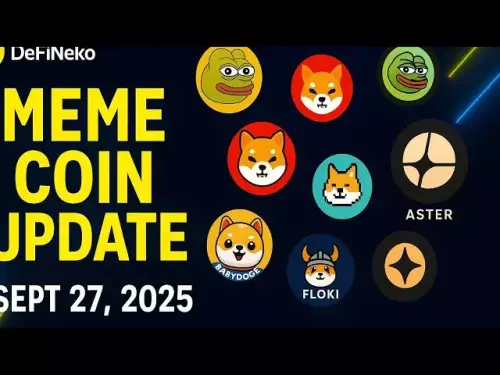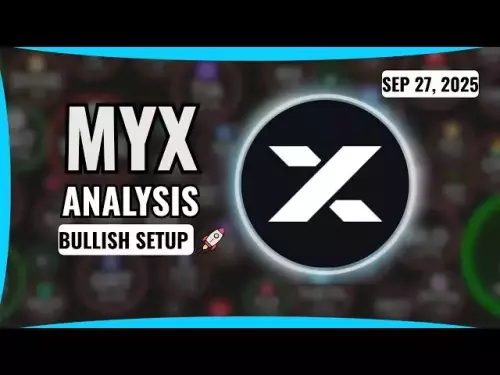-
 bitcoin
bitcoin $109523.663807 USD
-0.13% -
 ethereum
ethereum $4019.526508 USD
2.06% -
 tether
tether $1.000482 USD
0.00% -
 xrp
xrp $2.776815 USD
0.18% -
 bnb
bnb $958.942396 USD
0.12% -
 solana
solana $204.294698 USD
3.84% -
 usd-coin
usd-coin $0.999693 USD
0.00% -
 dogecoin
dogecoin $0.232115 USD
2.09% -
 tron
tron $0.338028 USD
0.84% -
 cardano
cardano $0.790920 USD
1.50% -
 hyperliquid
hyperliquid $44.871443 USD
5.60% -
 ethena-usde
ethena-usde $1.000322 USD
0.04% -
 chainlink
chainlink $21.034165 USD
2.60% -
 avalanche
avalanche $28.794831 USD
-0.54% -
 stellar
stellar $0.360466 USD
1.24%
How to short Gate.io contracts?
Shorting crypto contracts on Gate.io involves opening an account, navigating the trading interface, understanding contract types, and implementing proper risk management strategies to capitalize on falling asset prices.
Nov 08, 2024 at 01:13 am

How to Short Gate.io Contracts: A Comprehensive Walkthrough
IntroductionShorting crypto contracts is an advanced trading strategy that allows traders to profit from falling asset prices. By understanding how to short Gate.io contracts, traders can potentially capitalize on market downtrends and protect their portfolios against losses. This detailed guide will provide a step-by-step walkthrough of the process, addressing common questions and offering practical tips.
Step 1: Understanding Shorting ContractsShorting a contract involves selling a futures contract and buying it back later at a lower price. In this case, you are borrowing the cryptocurrency from the exchange and selling it, with the obligation to buy it back at a future date. If the market price falls, you can buy back the cryptocurrency at a lower price and repay the loan, pocketing the difference as profit.
Step 2: Opening an Account on Gate.ioTo short contracts on Gate.io, you need to open an account and verify your identity. KYC verification is mandatory for security and regulatory compliance. Once your account is approved, fund it with the necessary cryptocurrency for the contract you want to short.
Step 3: Accessing the Contract Trading InterfaceNavigate to the "Futures Trading" section on Gate.io. Select the contract you want to short from the available options, such as BTCUSD, ETHUSD, or LINKUSD. The trading interface will display the contract details, including price, funding rate, and multiplier.
Step 4: Placing a Short OrderDetermine the appropriate entry point for your short trade based on your technical analysis or trading strategy. In the "Order Type" field, select "Sell Short." Enter the contract quantity you want to sell and the desired price below the current market price. The total amount of cryptocurrency required to maintain the position will be displayed in the "Margin" section.
Step 5: Managing RiskShorting contracts carries significant risk, and it is essential to implement proper risk management strategies. Set stop-loss orders to limit potential losses if the market moves against you. Monitor the funding rate closely, as it can impact your profitability over time.
Step 6: Closing the Short PositionOnce you have reached your profit target or if the market trend reverses, you need to close your short position. To do this, buy back the same contract size at a higher price than the entry point. The difference between the entry and exit prices, minus any fees, will be your profit or loss.
Step 7: Withdrawal and SettlementAfter closing your short position, you can withdraw the profits to your spot wallet. Gate.io offers multiple withdrawal options, including cryptocurrencies, fiat currency, and stablecoins. Ensure that you have sufficient funds in your spot wallet to cover the withdrawal fees before initiating the transaction.
Common Questions and Considerations- What is the minimum contract size for shorting on Gate.io?
The minimum contract size varies depending on the contract. For BTCUSD, the minimum is 1 contract, while for ETHUSD it is 0.1 contract.
- What happens if the market price rises instead of falling?
If the market price rises, you will incur losses on your short position. Your stop-loss order will help limit these losses.
- Is shorting contracts suitable for beginners?
Shorting contracts is an advanced trading strategy that requires a thorough understanding of market dynamics and risk management. Beginners are advised to start with spot trading or long-term investments.
- How do I avoid getting liquidated?
Monitor your maintenance margin closely. If the margin falls below a certain level, your position will be subject to liquidation. Add additional funds or close your position to prevent this from happening.
ConclusionShorting contracts on Gate.io can be a profitable trading strategy for experienced traders who understand the risks involved and can implement effective risk management techniques. By following this detailed walkthrough, you can navigate the process effectively and potentially profit from market downtrends. Remember to always trade responsibly and conduct thorough research before making any trades.
Disclaimer:info@kdj.com
The information provided is not trading advice. kdj.com does not assume any responsibility for any investments made based on the information provided in this article. Cryptocurrencies are highly volatile and it is highly recommended that you invest with caution after thorough research!
If you believe that the content used on this website infringes your copyright, please contact us immediately (info@kdj.com) and we will delete it promptly.
- Bitwise, Solana, and the ETF Filing Frenzy: What's the Deal?
- 2025-09-28 06:25:16
- Ruvi AI: Surpassing Tron's Demand, the Next 100x Token?
- 2025-09-28 06:25:16
- BSE, IPOs, and Crypto Funds: A New York Minute on India's Regulatory Tightrope
- 2025-09-28 06:30:01
- Ruvi AI: The Avalanche Ecosystem's Next Big Thing, Blazing Through Phase 3
- 2025-09-28 06:30:01
- Tron, Ruvi AI, and Institutional Backing: What's the Buzz?
- 2025-09-28 06:30:01
- Q-UP: Is Coin Flipping the Next eSports Sensation? A Look at Fairness in Gaming
- 2025-09-28 06:30:15
Related knowledge

How do I enable the "scalping-only" mode for Cardano (ADA) contracts?
Sep 24,2025 at 03:19am
Understanding Scalping Strategies in Crypto Derivatives1. Scalping in cryptocurrency trading refers to executing multiple short-term trades within min...
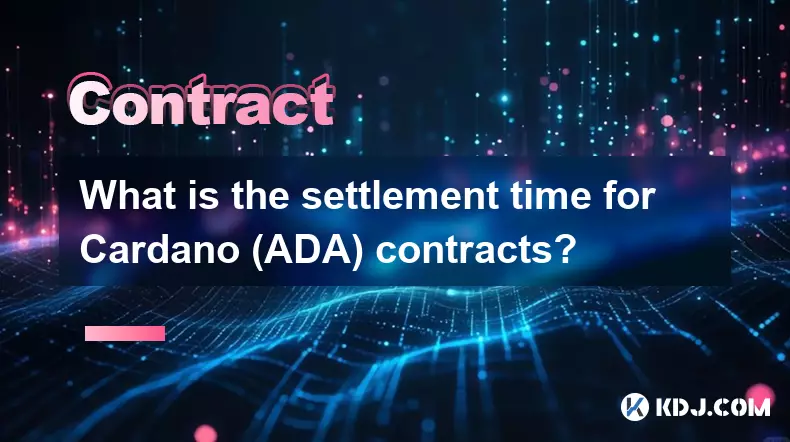
What is the settlement time for Cardano (ADA) contracts?
Sep 28,2025 at 04:18am
Understanding Cardano's Contract Settlement Mechanism1. Cardano operates on a proof-of-stake consensus model known as Ouroboros, which fundamentally i...

How do I add margin to Cardano (ADA) contracts?
Sep 27,2025 at 07:54pm
Understanding Margin in Cardano (ADA) Smart ContractsCardano operates on a proof-of-stake blockchain that supports smart contracts through its Plutus ...
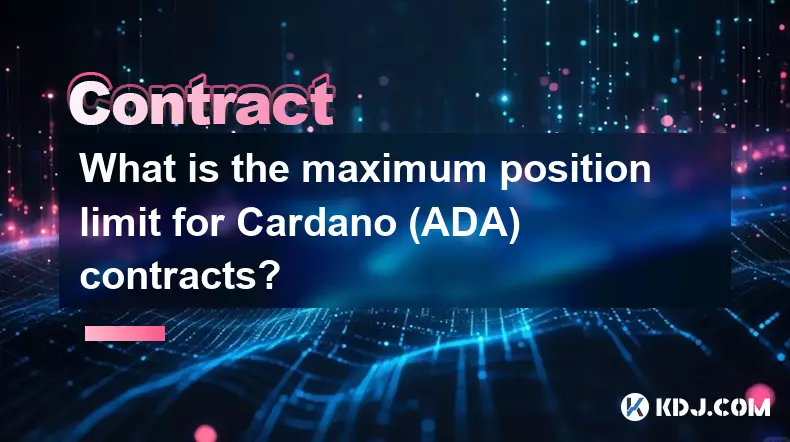
What is the maximum position limit for Cardano (ADA) contracts?
Sep 23,2025 at 11:00pm
Understanding ADA Futures and Derivatives Market Structure1. Cardano (ADA) futures contracts are offered by several major cryptocurrency derivatives e...
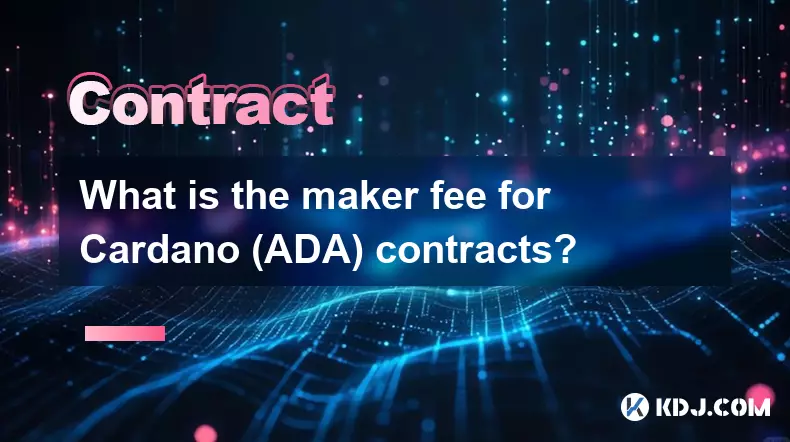
What is the maker fee for Cardano (ADA) contracts?
Sep 26,2025 at 09:01am
Understanding Maker Fees in Cardano (ADA) Contracts1. The concept of maker fees applies broadly across decentralized exchanges and smart contract plat...
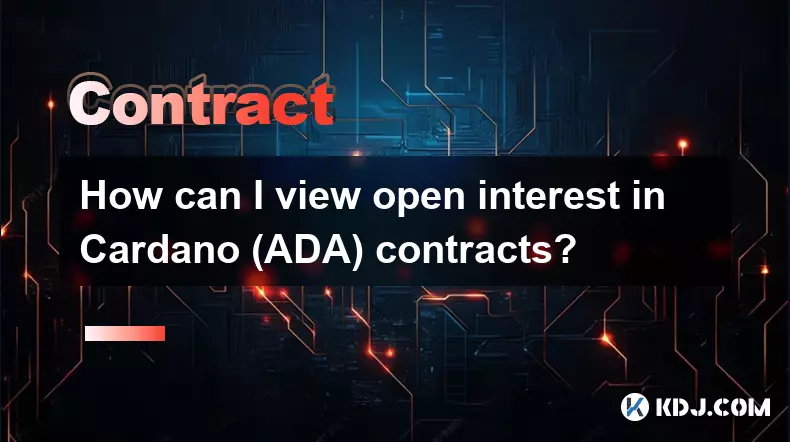
How can I view open interest in Cardano (ADA) contracts?
Sep 24,2025 at 07:36am
Understanding Open Interest in Cardano Derivatives1. Open interest refers to the total number of outstanding derivative contracts, such as futures or ...

How do I enable the "scalping-only" mode for Cardano (ADA) contracts?
Sep 24,2025 at 03:19am
Understanding Scalping Strategies in Crypto Derivatives1. Scalping in cryptocurrency trading refers to executing multiple short-term trades within min...

What is the settlement time for Cardano (ADA) contracts?
Sep 28,2025 at 04:18am
Understanding Cardano's Contract Settlement Mechanism1. Cardano operates on a proof-of-stake consensus model known as Ouroboros, which fundamentally i...

How do I add margin to Cardano (ADA) contracts?
Sep 27,2025 at 07:54pm
Understanding Margin in Cardano (ADA) Smart ContractsCardano operates on a proof-of-stake blockchain that supports smart contracts through its Plutus ...

What is the maximum position limit for Cardano (ADA) contracts?
Sep 23,2025 at 11:00pm
Understanding ADA Futures and Derivatives Market Structure1. Cardano (ADA) futures contracts are offered by several major cryptocurrency derivatives e...

What is the maker fee for Cardano (ADA) contracts?
Sep 26,2025 at 09:01am
Understanding Maker Fees in Cardano (ADA) Contracts1. The concept of maker fees applies broadly across decentralized exchanges and smart contract plat...

How can I view open interest in Cardano (ADA) contracts?
Sep 24,2025 at 07:36am
Understanding Open Interest in Cardano Derivatives1. Open interest refers to the total number of outstanding derivative contracts, such as futures or ...
See all articles
























